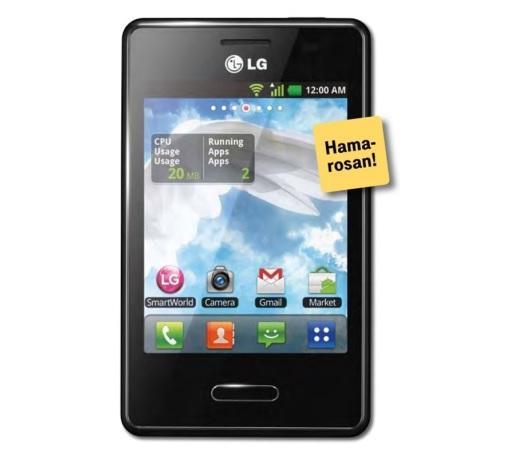
One of the things I love most about Android is that so many different manufacturers have the ability to create phones for this platform, thus giving them the freedom to dictate which features and designs they think would work best with the popular mobile OS. With Android you have limitless possibilities regarding designs, and new designs come out every few weeks. You have big phones, little phones, almost tablet-sized phones, and the topic of today: tiny phones, like the LG Optimus L3 II.
The L3 II is the successor of the model LG released last year, the LG Optimus L3. The LG Optimus L3 was an interesting device because while the specs were lackluster (as expected for an entry-level Android handset) the design of the device was actually very elegant. The design is similar to the way the Nokia Lumia series looks, which just goes to show that it is possible for a handset to be cheap and look good at the same time. However, it’s still what’s under the hood that will ultimately determine the customer’s overall experience with a device and with the low-end specs that were incorporated with the device you really start to understand the meaning “You get what you pay for,” when it comes to the LG Optimus L3.
So what’s different about the LG Optimus L3 II?
With the Optimus L3 II the main focus kind of flip-flopped. LG now seems to have put more focus into the specs and software and less on the design of the device. The design of the LG Optimus L3 II really doesn’t have anything special I can say about it - this device actually looks like any other low-end Android, which I wonder if that will play a factor in how well it will sell. It’s still an entry-level device with low-end specs (some would even call it bottom of the barrel) but it’s definitely received a tune-up since its predecessor.
The device is certainly small with a 3.2-inch display and features a 320x240 resolution IPS; it’s not the best, but you have to consider that this device was not designed to be the best. Also, you don’t need a terribly high resolution for a screen so small in order to get a clear image.
The device also features a 1 GHz processor and has 512 MB of RAM. You have a rear-facing 3.2 megapixel camera and no front-facing camera. There’s 4 GB of internal memory, and it can support up to a 32GB microSD card. All of this tiny phone goodness runs on a 1,540 mAh battery.
One nice thing about this device is that even though it’s lower-end, it’s still running on Android 4.1 Jelly Bean. Even some of the more powerful phones we see showcased at Mobile World Congress are still running on older versions like Ice Cream Sandwich (like we see in this video with the Acer C1). You can’t really expect a whole lot in regards to specs coming from a device that has such a limited amount of space to work with, but with what it does have to work with LG seems to have done a decent job with the LG Optimus L3 II and I expect that it will sell fairly well in the communities that focus in more on these types of smartphones.
It’s a baby device with baby specs, and probably tailored for either an older crowd of cellphone users or a younger generation looking for their first smartphone. The phone might seem lackluster and not worth mentioning to us because we have experience with much more powerful devices, but there are people out there where this device would be perfectly suitable as long as the price is right. There is a huge market out there that exists for low-end smartphones and a lot of people tend to forget that. LG is doing a good job releasing phones of all types and sizes that have different target audiences – something that I think other companies could learn from. While companies like Samsung have clearly benefited from ditching carrier exclusives, LG comes through for customers in a different way by offering a variety of phone types under one popular name line: Optimus.
While it’s clear that this phone won’t gain a huge following here in the States, I do wonder how well a small phone would do if manufacturers were to somehow manage to cram competitive specs into the device. Would small phones make a comeback or are big phones here to stay? Let me know your thoughts in the comments!
Image via Gadgetian